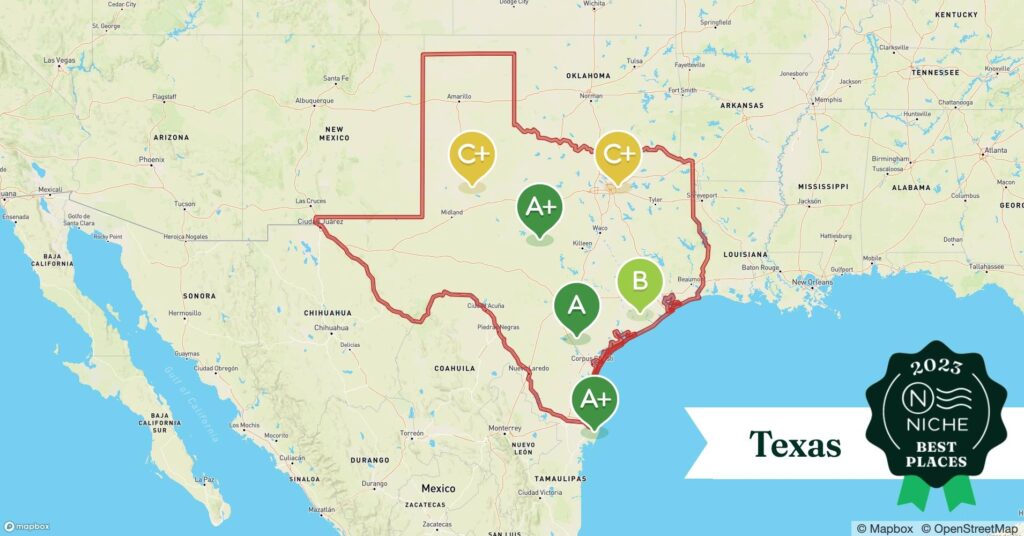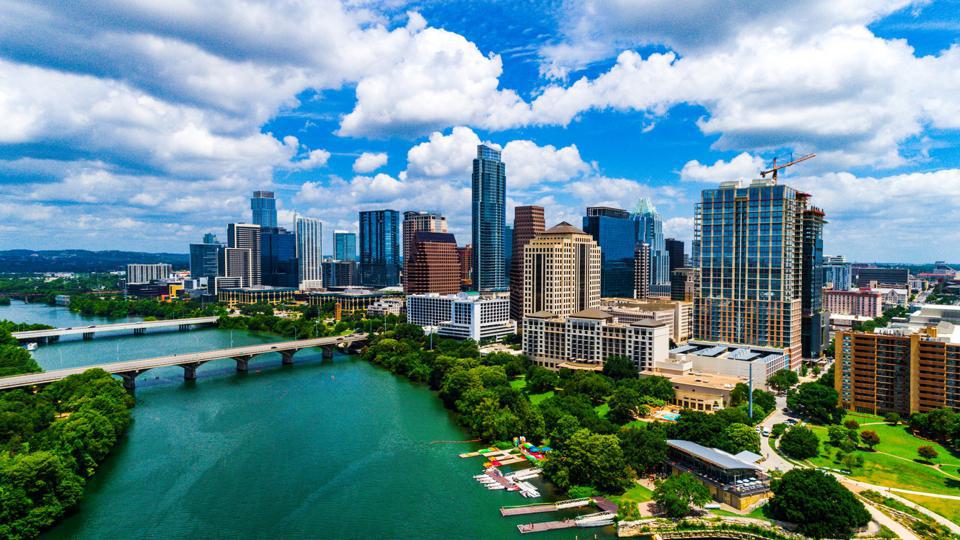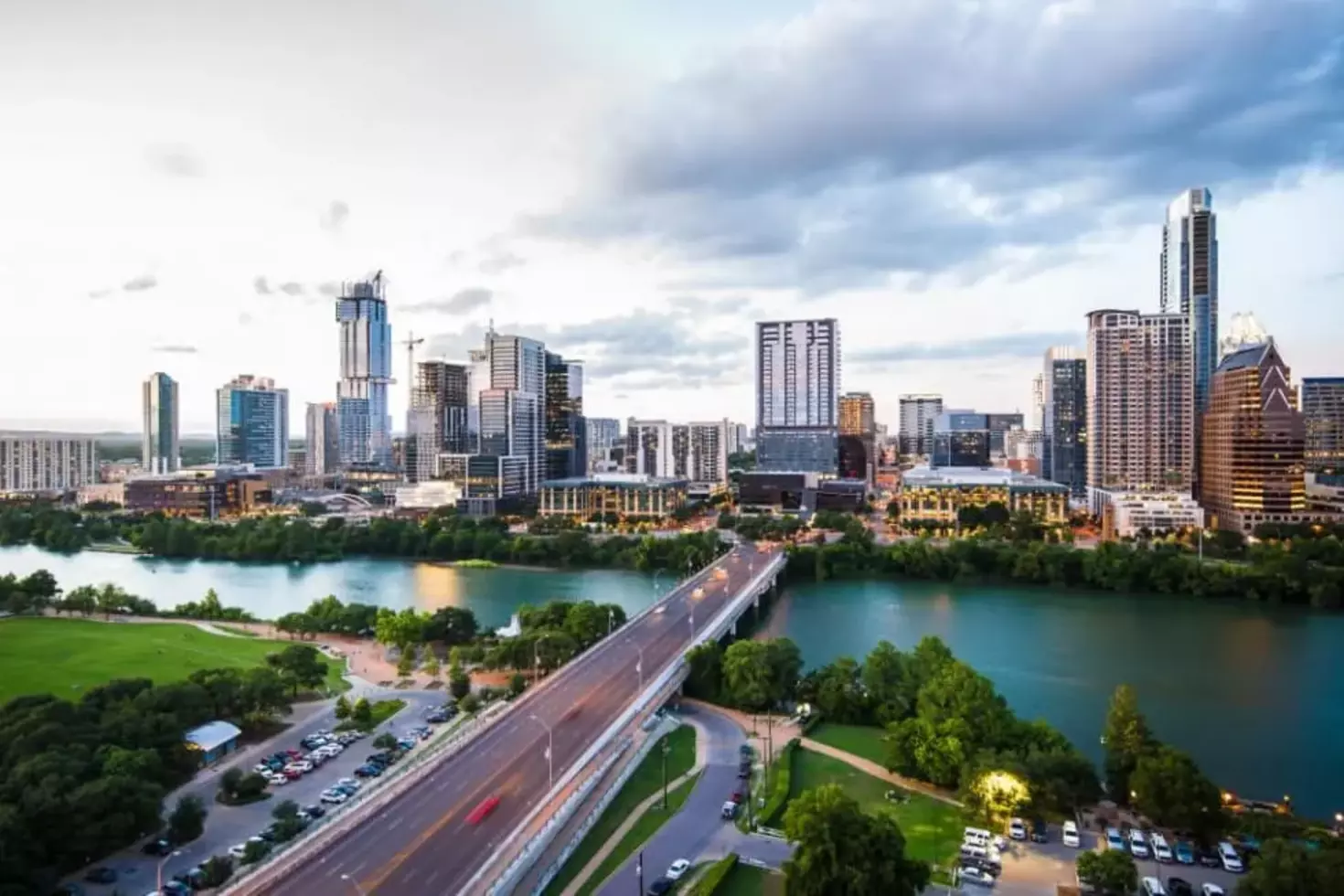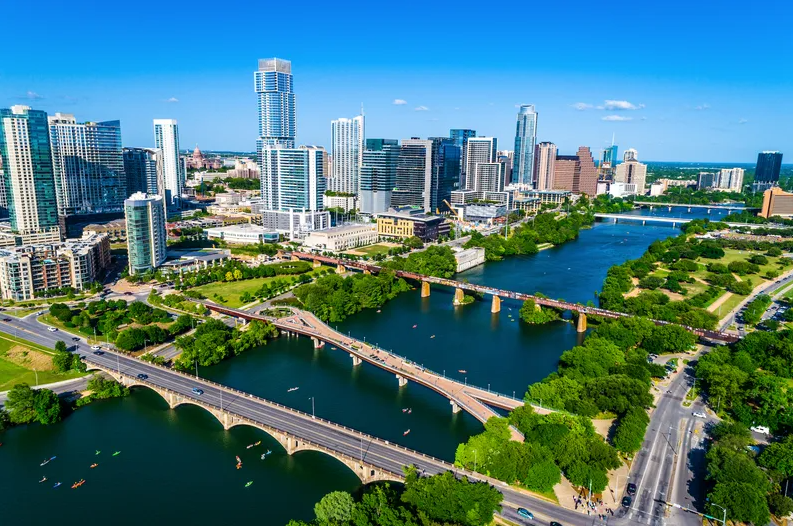When considering a move to Texas, it is essential to select the ideal area that suits your lifestyle and preferences. With its vast and diverse landscapes, Texas offers a multitude of enticing options for potential residents. From vibrant cities with bustling economies to serene rural retreats, each region showcases its distinct charm and attractions. In this article, we will explore various factors to consider when determining the best area of Texas to call home. Whether you prioritize job opportunities, cultural amenities, outdoor activities, or a tight-knit community, we will guide you towards the perfect location that aligns with your needs and desires.
Cost of Living
Housing
When considering the cost of living in Texas, housing is one of the key factors to consider. The state offers a variety of options for housing, ranging from affordable apartments to luxurious homes. The cost of housing varies across different cities and regions within Texas. Major cities like Austin and Dallas tend to have higher housing costs compared to smaller towns. However, Texas as a whole is known for its relatively affordable housing options, making it an attractive location for individuals and families looking for a reasonable cost of living.
Transportation
In terms of transportation, Texas boasts a well-developed infrastructure that provides easy access to different parts of the state. The cost of transportation largely depends on individual commuting preferences. While owning a car is often necessary in many parts of the state, public transportation systems are also available in major cities, offering affordable alternatives for daily commuting. Texas has an extensive highway system, making road travel convenient and efficient. Additionally, the state has numerous airports, which guarantees easy access to both domestic and international destinations.
Utilities
When it comes to utilities, Texas generally offers competitive rates. The cost of electricity, water, and gas varies across different providers and regions within the state. It is advisable to research and compare the rates offered by different utility companies in your specific area to ensure you are getting the best value for your money. Adhering to sustainable practices such as energy-efficient appliances and water conservation can also contribute to reducing utility costs in the long run.
Job Opportunities
Texas is widely recognized as a hub for various industries, making it an excellent place for job opportunities. The state’s economy is diversified, with key sectors including technology, energy, healthcare, manufacturing, and finance. Austin, often referred to as the “Silicon Hills,” is home to a thriving technology industry and offers a multitude of job opportunities in this sector. Similarly, Houston has a dominant presence in the energy industry, providing ample employment opportunities for those seeking careers in oil, gas, and renewable energy. With such diverse industries, Texas provides a wide range of job prospects to suit different interests and skill sets.
Industries
Texas’ job market is driven by a variety of industries. The technology sector is particularly booming, with companies like Dell, IBM, and Apple establishing a strong presence in the state. The energy industry, encompassing oil, gas, and renewable energy, also plays a significant role in Texas’ economy. The healthcare industry is another major contributor, with a growing demand for healthcare professionals. Manufacturing, finance, and agriculture are additional sectors that offer job opportunities across the state. The diversity of industries in Texas ensures a broad array of employment prospects for residents.
Unemployment Rate
As of [latest available data], Texas’ unemployment rate stands at [percentage]. It is crucial to consider that the unemployment rate can vary across different cities and regions within the state. Urban areas often provide a higher number of job opportunities and lower unemployment rates compared to rural areas. However, Texas’ thriving economy and diverse industries generally contribute to a healthy job market, offering prospects for those actively seeking employment.
Average Salaries
Average salaries in Texas vary depending on the industry, education level, and experience. Certain industries such as technology and finance offer higher earning potential, while others may have more moderate salary ranges. It is worth noting that the cost of living in Texas is generally lower compared to some other states, which can affect the overall perception of earning potential. However, Texas offers competitive salaries across different occupations, ensuring individuals have the opportunity to maintain a comfortable standard of living.

This image is property of d33a4decm84gsn.cloudfront.net.
Education System
Texas prides itself on a comprehensive education system that encompasses both K-12 school districts and higher education institutions.
School Districts
Texas has a vast network of school districts, each offering various educational programs and extracurricular activities. The state has implemented rigorous academic standards to ensure high-quality education for students. However, it is important to research and consider the specific school district when choosing a place to live in Texas, as the quality of education can vary. Major urban areas tend to have more extensive school district options with a wide range of resources, while rural areas may have limited options but still provide quality education.
Colleges and Universities
Texas is home to numerous colleges and universities, offering a wide range of academic programs and degrees. The state is renowned for its public university systems, including the University of Texas and Texas A&M University. These institutions have strong academic reputations and provide a variety of undergraduate and graduate programs. Additionally, Texas has private colleges and community colleges, ensuring access to higher education for students with different interests and goals.
Quality of Education
The quality of education in Texas varies across different school districts and institutions. While the state emphasizes high academic standards, it is advisable to research and consider school ratings, test scores, and graduation rates when choosing an area to live in. Texas’ renowned universities contribute to the state’s reputation for providing quality higher education opportunities. However, it is essential to examine individual institutions’ academic programs, faculty, and resources to determine the best fit for your educational goals.
Healthcare Services
Texas offers a robust healthcare system, ensuring access to quality medical services for residents.
Hospitals
The state is home to numerous hospitals, ranging from small community medical centers to large, specialized facilities. Houston’s Texas Medical Center, one of the largest medical complexes globally, offers a wide range of specialized care and cutting-edge research. With ample healthcare options, individuals residing in Texas can access necessary medical services across various specialties.
Quality of Care
The quality of healthcare in Texas is generally high, with the state prioritizing advancements in medical practices and technologies. Texas has several nationally recognized hospitals and medical institutions that consistently provide top-notch care. However, it is advisable to research specific healthcare providers and their ratings to ensure you receive the level of care you desire.
Specialty Centers
Texas is known for its specialized medical centers, offering advanced treatments and care for specific conditions. In Houston, the MD Anderson Cancer Center is renowned for its cancer treatments and research. Similarly, the Texas Heart Institute in Houston and the Texas Children’s Hospital are recognized nationally for their specialized care. These specialty centers ensure that residents have access to world-class medical services without the need for extensive travel.

This image is property of www.improovy.com.
Climate and Weather
Texas experiences a range of climates across its vast territory, offering diverse weather patterns.
Temperature Range
The temperature range in Texas varies depending on the region. In general, the state experiences hot summers, with temperatures reaching well above 90°F (32°C) in many areas. Winters tend to be milder, with temperatures rarely dropping below freezing in most parts of the state. In West Texas, however, winters can be cooler, with occasional snowfall. The coastal areas, such as Corpus Christi and Galveston, enjoy moderate temperatures throughout the year due to their proximity to the Gulf of Mexico.
Rainfall
Texas receives varying levels of rainfall depending on the region. Coastal areas tend to receive higher amounts of precipitation, particularly during hurricane seasons. Inland regions experience less rainfall overall, with some areas bordering on desert-like conditions. The state also encounters occasional severe weather events, such as thunderstorms, tornadoes, and hurricanes, particularly along the Gulf Coast. It is essential to stay informed about weather patterns and preparedness measures to ensure personal safety.
Natural Events
Texas is known for its diverse natural beauty and attractions. From the stunning landscapes of Big Bend National Park and Palo Duro Canyon to the coastal areas along the Gulf of Mexico, the state offers a wealth of outdoor recreational opportunities. Residents can enjoy activities such as hiking, camping, fishing, and birdwatching. Texas’ geography allows for a wide range of outdoor experiences, making it an attractive location for individuals who appreciate nature and outdoor activities.
Recreational Activities
Texas offers a plethora of recreational activities tailored to different interests and preferences.
Parks and Recreation
The state is home to numerous parks and recreational areas where residents can enjoy outdoor activities. The Texas state parks system provides opportunities for camping, hiking, boating, and wildlife watching. Popular parks, such as Big Bend National Park, Garner State Park, and Guadalupe Mountains National Park, offer breathtaking natural scenery and exciting outdoor adventures. Additionally, many cities and towns have local parks equipped with amenities like playgrounds, picnic areas, and sports facilities.
Sports and Leisure
Sports are an integral part of Texan culture, with football, baseball, basketball, and soccer being popular among residents. Texas boasts several professional sports teams, including the Dallas Cowboys (NFL), Houston Astros (MLB), and San Antonio Spurs (NBA). Attending live sporting events is a common pastime for many Texans. The state also offers opportunities for leisure activities such as golfing, fishing, and boating, thanks to its abundance of lakes, rivers, and coastline.
Cultural Events
Texas embraces its rich cultural heritage by hosting numerous cultural events throughout the year. From music festivals like the South by Southwest (SXSW) in Austin to iconic rodeos like the Houston Livestock Show and Rodeo, there are ample opportunities to immerse yourself in Texan traditions and celebrations. The state is also known for its vibrant arts scene, with thriving theater districts, art galleries, and museums. Cultural diversity is celebrated through festivals that showcase various ethnic communities, providing residents with a culturally enriching experience.

This image is property of www.forbes.com.
Crime Rate
Understanding the crime rate in a potential living area is crucial for personal safety and peace of mind.
Violent Crimes
Texas, like any state, experiences varying levels of violent crimes. However, it is important to note that crime rates can differ widely across different cities and neighborhoods within Texas. Urban areas tend to have higher crime rates compared to rural areas. To ensure personal safety, it is advisable to research crime rates and statistics for specific areas you are considering residing in. Staying informed about safety measures, such as home security systems and neighborhood watch programs, can also contribute to a safer living environment.
Property Crimes
Property crimes, including burglary, theft, and motor vehicle theft, can occur in any area. However, the incidence of property crimes may vary across different neighborhoods within Texas. It is recommended to research crime rates specific to your chosen area and take necessary precautions, such as securing your property, to minimize the risk of becoming a victim of property crimes. Additionally, being aware of local law enforcement efforts and community safety initiatives can contribute to a safer living environment.
Safety Measures
Texas has a strong law enforcement presence and is committed to ensuring public safety. Local police departments and sheriff’s offices work diligently to maintain law and order. Residents are encouraged to be proactive in their personal safety by taking common-sense precautions, such as locking doors and windows, keeping valuables secure, and being aware of their surroundings. Engaging with community safety programs, participating in neighborhood watches, and reporting suspicious activity can also contribute to a safer living environment.
Transportation
Texas offers a well-developed transportation system, providing residents with convenient options for commuting and travel.
Public Transit
Public transportation systems are available in major cities across Texas, offering bus and light rail services. Cities like Houston, Dallas, and Austin have extensive public transit networks, providing a cost-effective and environmentally friendly alternative to driving. Public transportation options enable commuters to navigate the city efficiently, reducing congestion on the roads. For longer journeys or travel between cities, Texas also has Amtrak train services and Greyhound bus services, ensuring connectivity across the state.
Road Infrastructure
Texas has a well-maintained and extensive road infrastructure, making road travel convenient and efficient. The state is known for its expansive highway system, which connects major cities and regions. Texas highways are often multi-lane, allowing for smooth traffic flow and reducing congestion. The road infrastructure includes toll roads as well, providing additional options for quicker, less congested travel. Regular maintenance and ongoing improvement projects ensure the infrastructure remains up to date and accommodates the state’s growing population.
Commuting Time
Commuting time can vary depending on your location within Texas and the distance you need to travel. Urban areas, such as Austin and Dallas, typically have higher traffic volumes, resulting in longer commute times during peak hours. It is advisable to plan your daily commute, taking into account potential delays and traffic patterns. Public transportation options, such as buses and trains, can help alleviate commuting time, particularly in major cities where traffic congestion can be significant.

This image is property of images.ctfassets.net.
Cultural Diversity
Texas embraces its diverse population, showcasing a rich tapestry of cultures, traditions, and languages.
Ethnic Communities
Texas is widely recognized for its diverse ethnic communities, which contribute to the state’s vibrant culture. It is home to various communities, including Hispanic, African American, Asian, and Native American. Cities like Houston, Dallas, and San Antonio are known for their multicultural neighborhoods, where residents can experience a blend of international cuisines, cultural festivities, and artistic expressions. Texas’ diversity fosters a sense of inclusivity and offers residents opportunities to engage with a wide range of perspectives and backgrounds.
Language Diversity
Texans speak a variety of languages, reflecting the state’s multicultural composition. While English is the primary language spoken in most areas, there are significant populations of Spanish speakers, particularly in cities along the Texas-Mexico border. Additionally, Hindi, Vietnamese, Korean, and other languages are spoken within specific communities. Texas’ language diversity enriches cultural interactions and provides residents with opportunities to engage in multicultural exchanges.
Cultural Institutions
Texas is home to numerous cultural institutions that celebrate and preserve its diverse heritage. The state boasts world-class museums, such as the Museum of Fine Arts in Houston and the Kimbell Art Museum in Fort Worth, which house impressive collections of art from different eras and cultures. The Texas State History Museum in Austin offers a comprehensive exploration of the state’s history and cultural heritage. Additionally, the state hosts festivals, parades, and cultural events that showcase the richness of Texan traditions.
Community Services
Texas communities offer a range of services and amenities, ensuring a high quality of life for residents.
Libraries
Texas has an extensive network of libraries that provide resources and educational opportunities to residents. Public libraries offer access to books, online databases, computer services, and community programs. Many libraries host events and workshops for all ages, encouraging a love for reading and learning. Additionally, libraries play a vital role in bridging the digital divide by providing internet access and computer facilities to those who may not have such resources at home.
Parks and Playgrounds
Texas communities prioritize outdoor spaces and recreational areas. Local parks and playgrounds provide residents with opportunities for leisure activities and social interactions. Well-maintained parks offer amenities such as walking trails, picnic areas, playgrounds, and sports facilities. These spaces create a sense of community and promote a healthy and active lifestyle for residents of all ages. Additionally, parks often host community events and gatherings, fostering a strong sense of belonging and camaraderie.
Community Centers
Community centers serve as hubs for social, educational, and recreational activities. They offer a wide range of services, including fitness programs, art classes, and educational workshops. Community centers often organize events and cultural celebrations, encouraging residents to engage with their neighbors and build strong bonds within the community. These centers play a vital role in fostering a sense of belonging and enhancing quality of life for Texas residents.
In conclusion, Texas offers a diverse and vibrant living environment with various amenities, job opportunities, and cultural experiences. The state’s affordable cost of living, robust education system, quality healthcare services, and abundant recreational activities make it an attractive choice for individuals and families seeking a high quality of life. However, it is important to research and consider specific cities, neighborhoods, and individual preferences when choosing the best area within Texas to live in.

This image is property of kotacapitalinvestments.com.
